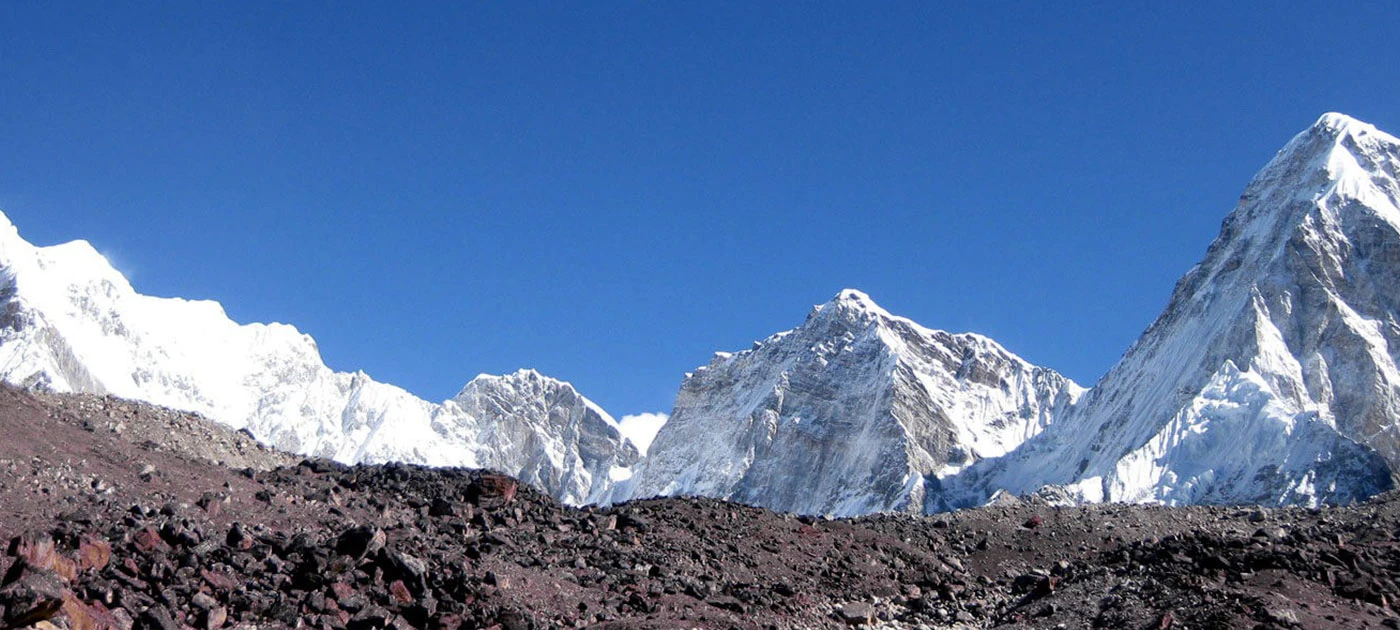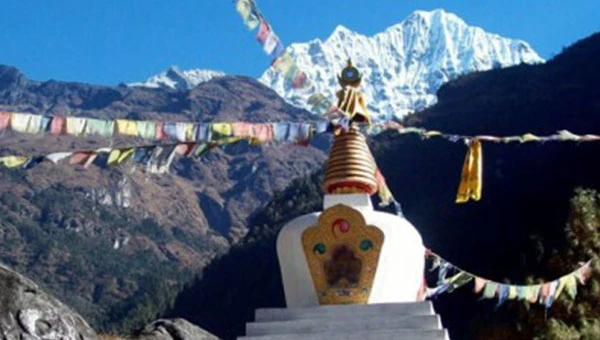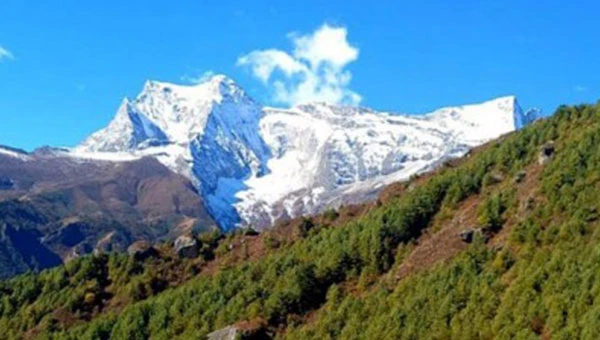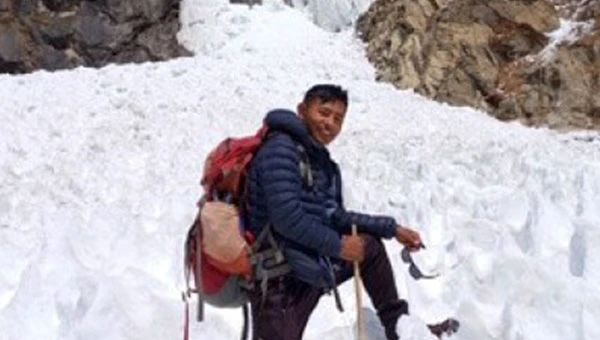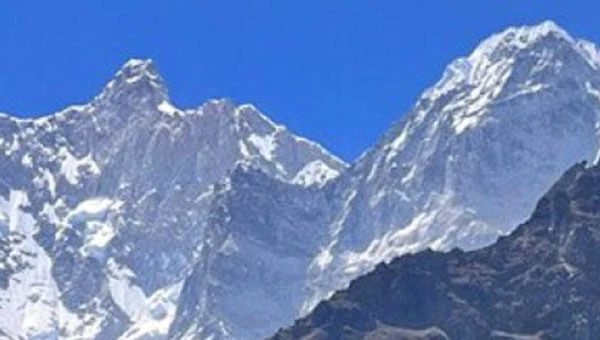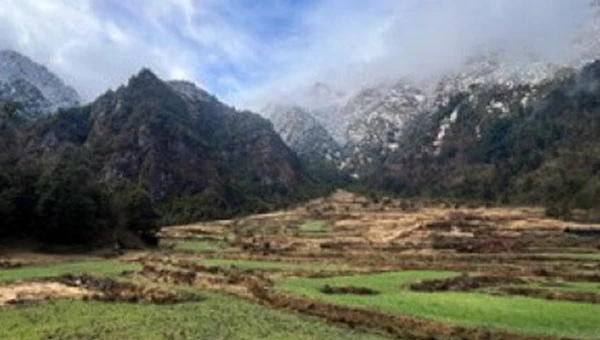You don’t need to be a mountaineer or a pro athlete. To date, people of all shapes, ages, and sizes have successfully made it to the base of Mt. Everest pushing their limits so will you with little preparation and determination. There are some preparations you need to perform to tick off Everest Base Camp Trek from your bucket list, creating a lifetime experience.
Looks like you are about to head for the Everest Base Camp Trek and came here to learn about the preparations you need before setting out for the trip to Everest Base Camp.
How hard will the route for the Everest Base Camp Trek be?
While this question seems pretty tricky. There are a plethora of trekking routes that lead you to the base of Mt. Everest and each trekking route has its difficulties. It depends upon you which trekking route you take to Everest Base Camp.
The trekking trails are rough, and rocky with a steep ascent and descent making it challenging for trekkers. The starting point of trekking is Lukla (2,800 m) where Tenzing Hillary Airport, the dangerous airport with a short runway, is located.
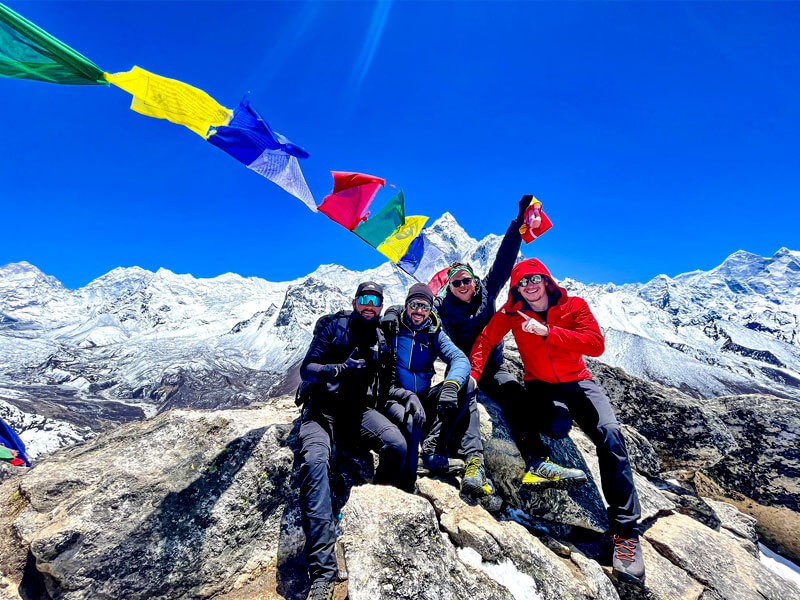
The normal Lukla to Everest Base Camp route is taken by the majority of the trekkers as it is a well-established trail with well-facilitated teahouse offering access to iconic landmarks like Namche Bazaar and the Tengboche monastery with breathtaking vistas of surrounding mountains.
The hardest trail is between Lukla and Namche Bazaar as it involves a steep ascent after crossing Hillary Suspension Bridge. The trail to Gorakshep from Lobuche is rocky and uneven terrain consisting of moraines, boulders, and some steep ascents and descents.
The modified classic route from Salleri to Everest Base Camp offers you the most authentic experience of Sherpa villages and culture, and the trails are even more virgin. However, the route involves more walking days with a gradual gain in altitude.
You can trek to Everest Base Camp via Gokyo Lake, the freshwater lake in the high Himalayas of Nepal. The route via Gokyo Lake involves crossing the Cho La Pass, which requires scrambling over the rocks.
Which season is harder for the Everest Base Camp Trek?
The season in which you embark on a trek to Everest Base Camp does matter a lot. The difficulty of the Everest Base Camp Trek can vary with each season of the year.
From June to August, monsoons bring heavy rainfall, making the trails muddy and slippery. You need to be careful while walking and there could be leeches in the lower elevation. There is a high risk of landslides and avalanches on the way to the Everest Base Camp. You may even have to face flight cancellations and delays due to poor weather circumstances in Lukla.
The visibility will be obstructed by the dark clouds so you won’t be able to witness the breathtaking vistas of mountains. Moreover, you need to pack rain gear like a raincoat. So the season of the Monsoon is less favorable and challenging for the Everest Base Camp Trek.
The most challenging season for trekking to Everest Base Camp is winter. The trails will be covered by snow and ice making you take extra precautions as the trail will be slippery and the risk of avalanches is high. The temperatures drop below the freezing point and you might suffer from hypothermia and frostbite.
Due to these extreme conditions, there are few trekkers along the trails to Everest Base Camp, and many teahouses may be closed during this time.
Which season is less difficult for the Everest Base Camp Trek?
The season of spring and autumn is a perfect time for a trip to Everest Base Camp. The weather extremities like in winter and monsoon season can’t be found in spring and monsoon.
Spring is the most popular time of the year for Everest Base Camp Trek. You will find thousands of trekkers on the trails. Generally, the weather will be stable, offering awe-inspiring vistas of the mountains. The temperatures will be mild with clear blue skies.
Since it is the blossoming time of the year, the trails are decorated by the national flower of Nepal, the Rhododendrons, and other colorful flora.
Autumn (September to November) is another excellent season to embark on the journey to the Everest Base Camp. The weather will be stable with mild temperatures and clear skies will allow you to enjoy the stunning vistas of the mountains.
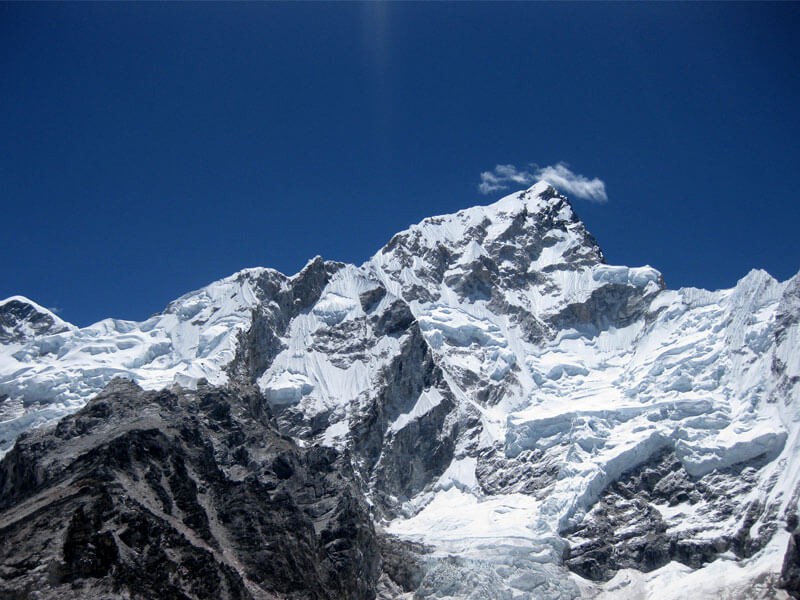
There will be occasional colds as the season nears November so pack your trekking bag with a few warm jackets. The trails will be less crowded hence you will have a serene trekking experience in the Everest region.
In summary, due to weather extremities in winter and monsoon, the trek to Everest Base Camp will be hard and challenging. At the same time, spring and autumn are popular times of the year as the weather will be favorable for a once in a lifetime trekking experience to Everest Base Camp.
How Hard is the Everest Base Camp Trek for Beginners?
As said earlier, the Everest Base Camp Trek is quite challenging; however, with proper preparation, you can easily make it to the base of Mt. Everest. So, if you are a beginner, you need to start pre-preparations before the trek.
Everest base Camp Trek involves ascending to higher elevations daily. You don’t need to have prior trekking experience nor should you be a high-altitude mountaineer for trekking to Everest Base Camp. If you have done it before, it would be highly beneficial for you.
Hence if you are a beginner, you can start to prepare before the trek. Make a plan and perform activities such as jogging, cycling, and swimming, multi-day hiking with a day bag, attending gyms, and taking stairs instead of an elevator. These all help to eliminate muscle cramps and fatigue building the strength of your leg.
Regular exercise and outdoor activities boost your ability to withstand long hikes. You need to build your leg strength.
Besides physical fitness, you also need to prepare for mental stability as well. Practice yoga and meditation that help to reduce stress and build calmness and patience in you to tackle any unforeseen difficulties during the Everest Base Camp Trek.
Prepare yourself mentally to overcome challenges like flight delays or cancelations, weather circumstances, and other hurdles that may arise during the trek to Everest Base Camp.
Have a positive attitude and be flexible with the changes in the itinerary.
If you are mentally and physically well-prepared, then you are all set to be on the base of the tallest mountain, Mt. Everest, even if you are a beginner, enduring the challenges and difficulties that make your trekking experience in the Himalayas even more accomplished.
How hard is it to adapt to the increasing altitude during the Everest Base Camp Trek?
The trek to Everest Base Camp starts from Lukla located at an altitude of 2,800 m and reaches an altitude of 5,545 m - Kala Patthar. The altitude increases with everyday walking. The altitude is considered one of the major hurdles making the trek hard.
With the gradual increment in altitude, the trekkers suffer from altitude sickness, also known as Acute Mountain Sickness (AMS). The higher you ascend, the higher the risk of altitude sickness. You don’t need to worry because, with appropriate precautions, your body will adapt to the altitude gain.
The risk of altitude sickness can be minimized and treated with appropriate precautions.
Trekkers acclimatize to adapt to the increasing altitude in the high Himalayas of the Khumbu region. A slow and steady walk with short breaks helps your body adjust to the high altitude.
That’s the reason there is one acclimatization day at Namche (3,440 m) and Dingboche (4,410 m). During these rest days, you will be hiking to a higher elevation during the day and returning to a lower elevation for the overnight stay – Climb High, Sleep Low.
You need to drink plenty of water throughout the day to keep your body hydrated. In higher elevations, you need more fluids to adapt to the low oxygen level as the water supports the transport of oxygen in the blood.
Staying hydrated decreases the risk of altitude sickness and helps in the process of acclimatization. Avoid the consumption of alcohol and smoking as they dehydrate your body.
Your body needs calories to hike to the base camp of Mt.Everest as you lose calories while walking. So a well-balanced diet food is a must to have while trekking. You should eat food rich in carbohydrates, protein, vitamins, and minerals.
Carbohydrated meals provide energy for long walks in trekking while proteins prevent muscle fatigue. Fruits and vegetables contain a lot of vitamins and minerals, so include them in your meals.
Try to avoid meat. They aren’t as fresh as they are transported from lower altitudes and stored hence it's better to consume plant plant-based diet. A similar goes with junk and processed foods, they are low nutritional.
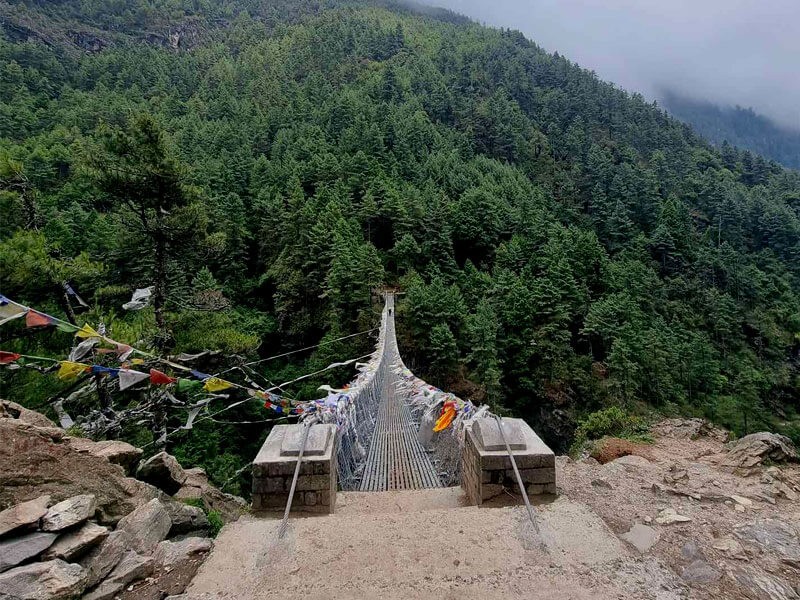
It’s essential to consume balanced food and avoid junk meat foods to cope with the physical demands and altitude sickness. You can have them during your stay in Kathmandu.
Medicines are consumed to prevent altitude sickness. There are many but the most consumed medication is Diamox. Diamox (Acetazolamide) is used to prevent and reduce the symptoms of altitude sickness. The medication reduces headaches, tiredness, nausea, and shortness of breath.
Start taking Diamox 1 to 2 days before you ascend to a higher altitude. It’s recommended to consult with your doctor before taking the medication.
The increasing altitude makes the trekkers hard to adapt and causes altitude sickness. However, with suitable precautions, the hard aspects of Everest Base Camp Trek can be overcome.
How hard is it to sleep in Everest Base Camp Trek?
In many cases, trekkers find it difficult to sleep at high altitudes. One particular reason can’t be specified as there are several reasons why it is hard to sleep during the Everest Base Camp Trek.
Many trekkers can’t sleep well due to sleep disturbances caused by altitude sickness. When the trekkers don’t acclimatize properly, they face difficulty in breathing and insomnia and have restless nights. That’s why it is crucial to ascend gradually and take acclimatization rest days.
The cold temperatures in the Everest region also make it hard to sleep at night. There are basic teahouses with limited heating options to stay warm and comfortable while sleeping. For this reason, the trekkers carry their sleeping bags to keep warm during the freezing night. Moreover, pack thermal clothes to keep yourself warm and comfortable so that you can have quality sleep.
How difficult is it to sleep in the last village, Gorak Shep, during the Everest Base Camp Trek?
The last village, Gorak Shep is at an altitude of 5,164 m before reaching Everest Base Camp and Kala Patthar. This is the place where most of the trekkers suffer from altitude sickness due to its high altitude.
You might not get good sleep at Gorak Shep due to altitude sickness. Headaches, difficulty breathing, and insomnia disturb your sleep. You might also experience waking up frequently during the night and difficulty falling asleep. You trek up, due to which you may be exhausted and find it hard to sleep.
It’s crucial to acclimatize properly by ascending gradually with short breaks and rest days at high altitudes like Namche and Dingboche. It will help you get to sleep at high altitudes so that you get good rest to continue your trek.
How hard will the everyday walk to Everest Base Camp be?
Everest Base Camp is a multi-day hike at a high altitude in the Himalayas. You need to walk 5-6 hours every day with a backpack. You ascend the altitude, gradually crossing the suspension bridges and Sherpa villages.
The trail to Everest Base Camp varies from well-maintained to rocky paths. Some trails are strenuous with steep ascend and descend. So you need to be physically fit enough to walk on those uneven and challenging trails.
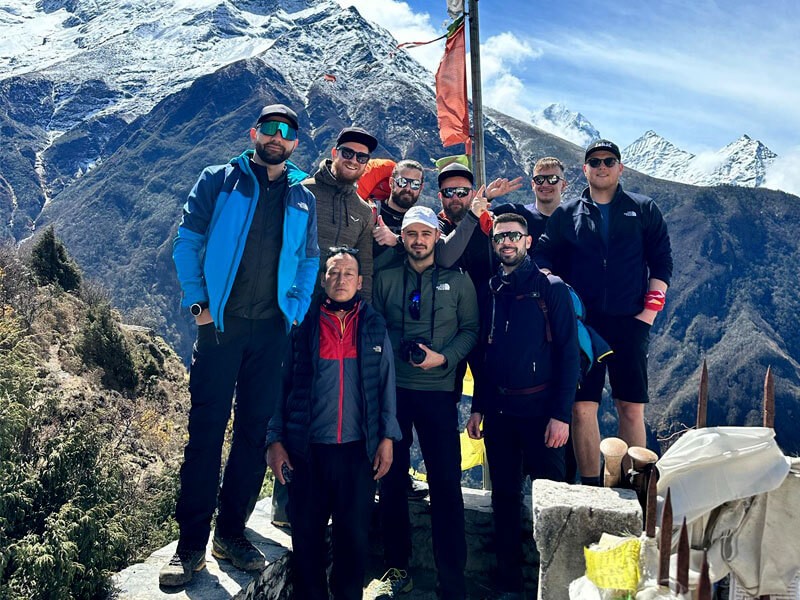
Since you carry a backpack, it could also cause difficulty for you to walk. You need to walk through steep trails so carry the things you need the most. Porters will be there to carry your luggage hence pack the day bag with the gear and things you need the most.
How comfortable do the shoes need to be for the Everest Base Camp Trek?
Since you have to walk a long distance over rocky and uneven terrain, the quality and comfort of your footwear is crucial. Otherwise, many times the discomfort caused by shoes makes it hard to reach the base of the Everest region.
Low-quality shoes cause friction, leading to the formation of extremely painful blisters, making walking difficult. If your shoes aren’t waterproof, then your leg gets wet, and you may suffer from cold-related injuries. Discomfort and pain from low-quality shoes slow down walking and affect the itinerary.
The trekking shoes along with the shocks must be durable as it’s a challenging trek to Everest Base Camp. The footwear should be ankle-covered. Many times the leg swells due to altitude sickness so it’s better to have a size slightly larger than your normal size.
If the trekking shoes are new, you should wear them on shorter walks to ensure they are broken in before the trek and won’t cause blisters during the Everest Base Camp Trek.
Last Thoughts on How Difficult the Everest Base Camp Trek Will Be
Everest Base Camp Trek is quite a challenging trek as it is a multiple-day hike in the high altitudes of the Himalayas. The rocky trail and weather extremities can be a hurdle in reaching your desired destination – Everest Base Camps.
With proper preparations and some precautions even if you are a beginner you can make a successful journey to Everest Base Camp. Physical and mental fitness with adequate acclimatization geared by professional clothes and equipment and proper knowledge of the terrain and weather will make your journey to Everest Base Camp less hard – Accomplished.
You can opt to choose the Everest base camp trek with helicopter return if you want a shorter version of the Everest trek. However, if you think you can't make it to the EBC Hike, there is also an option where you can reach Everest and have a bird's eye view of Everest base camp helicopter tour
